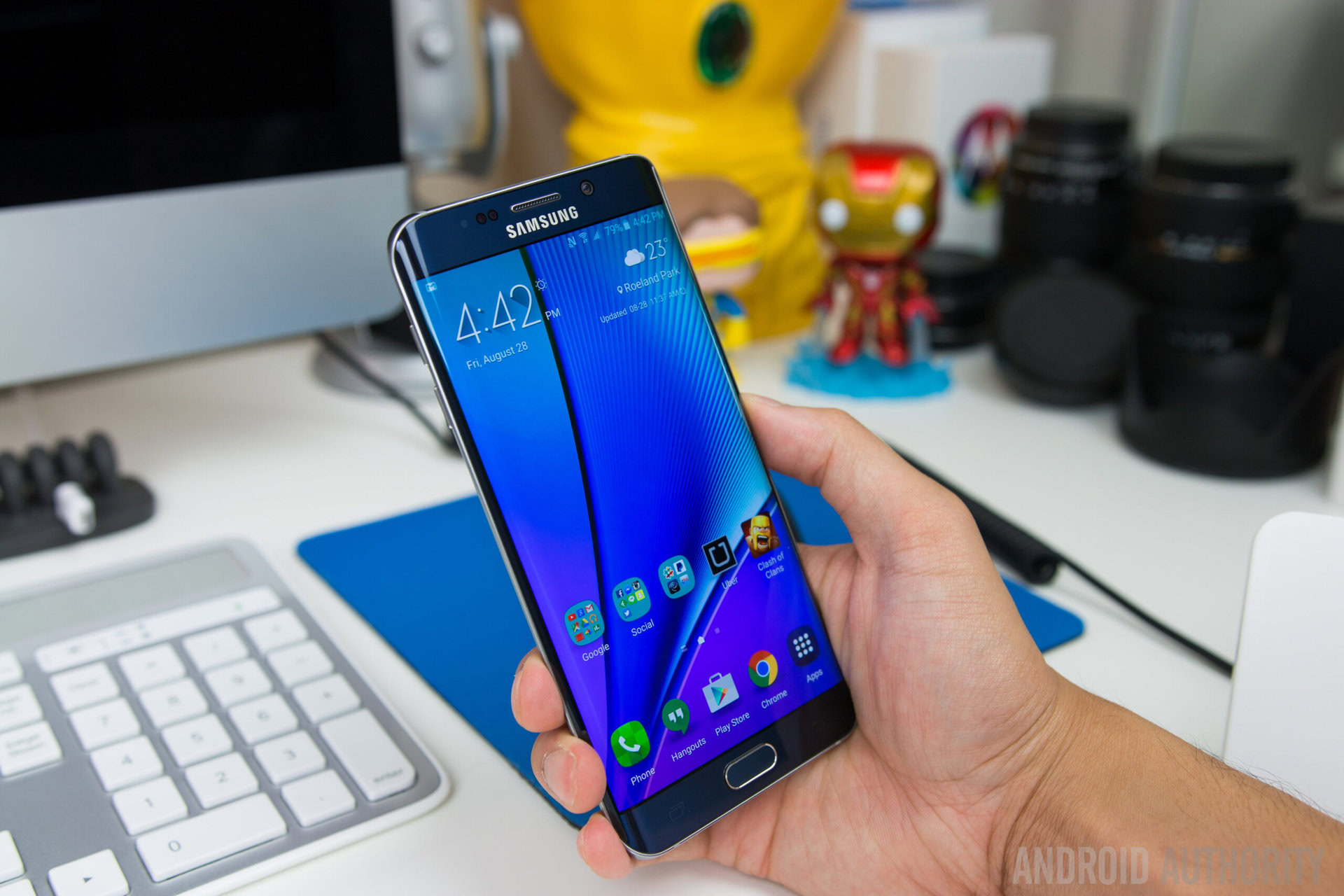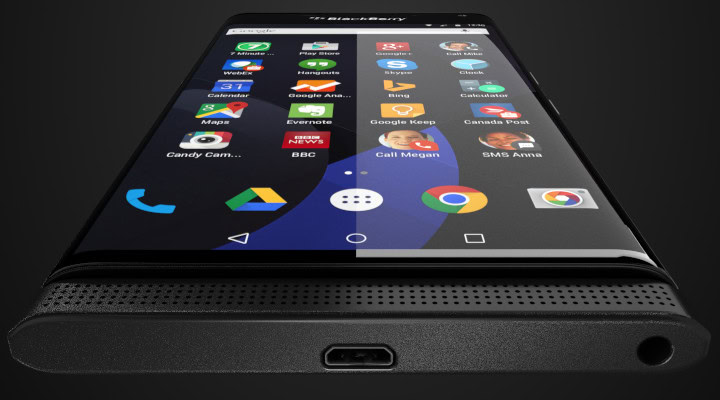Affiliate links on Android Authority may earn us a commission. Learn more.
Will uniqueness, nostalgia, and pricing drive the industry going forward?

In the early days of Android, six months of tech progress would yield a massive jump in technical prowess that would make consumers instantly covet the next big thing merely for its spec juice. Over the last couple years however, these jumps have turned into smaller leaps, and eventually into what seems more like short, calculated steps.
Case and point, in earlier 2015 we were given the LG G Flex 2, a Snapdragon 810 powered device with a 1080p display. In late-2015, we are still seeing Snapdragon 810 phones and the recently unveiled OnePlus 2 happens to be 1080p, even though most flagships have admittedly moved over to the QHD game. Heck, even Samsung’s first half and second half 2015 flagships are largely the same devices as far as specs are concerned, with extras like a bigger screen and S-Pen support being the only things that really differentiate the Note 5 from the Galaxy S6 family.
What’s holding back these leaps and bounds? Simply put, tech just isn’t moving at the speed it once was.
We’ve reached the point where display innovation is becoming somewhat irrelevant, as a 4K display arguably would add very little when compared to QHD, and many feel that 1080p is still more than good enough, especially for screens at or below 5.5-inches. Battery life continues to stay about the same, with OEMs simply making charging easier with faster methods for both wired and wireless charging. Speed boosts continue to be made by optimizing software and hardware, but the gains are rather modest and arguably the Snapdragon 801s and 805s of yesteryear aren’t that different than what we’re seeing this year, and in some ways are more reliable (see: overheating drama).
Until a big tech breakthrough happens, I don’t see any of this changing too much.
Where to go from here?
So where are OEMS left to go from here? Last year, there were two sure-fire ways to lead the pack: pricing or premium. The OnePlus One was a leader in the pricing category, with products like the M8 and Z series still at the forefront of the premium game, though Samsung began to expand into this arena with the Galaxy Alpha and the Galaxy Note 4.
In 2015, “Premium” is no longer enough I’d argue. The HTCOne M9 and Xperia Z3+ are both premium phones, but that doesn’t stop them from being utterly boring. Even the Galaxy S6 with its premium design and major overhaul in aesthetics has, to some degree, been overshadowed by the Edge. The devices that are really getting attention this year? Products that stand out by invoking uniqueness, nostalgia, or both.
Uniqueness
While Samsung’s fortunes might still be shrinking, there is no denying that the Galaxy S6 Edge has received a ton of attention from the media and the general public. The reason, of course, is that it isn’t the same old form factor. The edges of the Galaxy S6 don’t do anything all that special, other than a few minor extra functions. What they really do is lend to grip and help the phone look “pretty”.
As it turns out, pretty was not only enough to warrant a sizable premium over the functionally-identical Galaxy S6, the Edge actually ended up selling better. Samsung continues to milk the edge concept with the recent introduction of the Galaxy S6 Edge+, though it remains to see if curved edges will be enough to lure people to the Edge+ over its more functional brother, the Note 5.
[related_videos align=”center” type=”custom” videos=”637995,634294,605763,597711″]
Of course Samsung isn’t the only company that is looking to leverage uniqueness. Yes, we’re talking about the Blackberry Venice.
Uniqueness, meet nostalgia
Okay, it’s important to get this out of the way: The Android-powered Blackberry Venice is technically only a rumored device. That said, it has been leaked so many times, including new in-the-wild images, that it is hard to ignore.
While we can’t say how well the Blackberry Venice will do when it comes to sales, I have plenty of friends in and out of this industry that have expressed to me a great amount of interest in the Venice. The amount of traffic that I’ve seen from Venice-related articles is further testament to the fact that people are at least intrigued by the concept of a Blackberry Android. Furthermore, the number of positive comments on our site indicates at least a number of these folks aren’t just intrigued, they are actively excited and interested in potentially buying.

What makes the Blackberry special, though? With a Snapdragon 808 processor and other typical specs rumored, it’s certainly not what’s under the hood. Instead, it is the uniqueness factors at play: a dual edge design and a slide-out keyboard. The latter of these features also happens to invoke nostalgia.
Our very own Josh Vergara has expressed many times that he misses the days of physical keyboards, even if there really aren’t many advantages as touchscreen tech has advanced. Further working towards the nostalgia angle is the fact that Blackberry was the original king of the smartphone game and there are a number of Android users that came from Blackberry.
People naturally seem to crave the past, and the Blackberry appears to offer the perfect blend of past and present. If they can play their cards right, the Venice could end up being at least a modest hit for the company. Will it find the same level of success as the Edge? Probably not, considering Samsung’s current brand power probably means more to consumers than Blackberry’s past cred, but you don’t need to be massive hit to help drive the industry towards new directions.
What consumers want, and what they don’t
One area that really isn’t gaining any steam these days is the “Everything in one package” approach. While Samsung championed this philosophy to great success for a number of years, it seems only the power users of today really care about microSD, removable batteries, and other function-forward decisions. Instead, average consumers want a blend of high-end specs with beautiful aesthetics, while still keeping the user-experience as simplified and clutter free as possible.
The one OEM that has kept the “everything in one package” approach for 2015 is LG, and the LG G4 has seen rather limited success. Sure it has its fans but it certainly hasn’t been a runaway success for the company either. While the LG G4 also has a few uniqueness points going for it, like its leather back and LG’s signature buttons, it doesn’t quite stand out like the Edge or Venice.
Of course, Samsung isn’t the only OEM making a splash in 2015. OnePlus has received a fair amount of attention with the OnePlus 2, which melds great specs with excellent pricing. Motorola also looks to have found the right formula for 2015 as the Moto X Style (aka Pure Edition) has received a lot of positive attention for bringing great specs, unique customization aspects, and a killer price tag that starts at just $400.
Bottom-line, most mainstream users want one of two things: an affordable but capable product, or something that stands out from the crowd. Combine this with the fact that there just aren’t many tech leaps to be had and it becomes clear that form and pricing will continue to be what really drives forward the industry. It will be interesting to see how players like HTC, Sony, and LG react to these changing demands. Will they incorporate more eye-catching, head turning designs? Or will they follow Motorola’s example and drive flagship pricing further downward? I obviously don’t know the answer, but I’m certainly excited to see it all unfold.
Where do you think that the smartphone industry is heading? Enjoying the ride or do you wish for an age where specs and features drive change more than looks and pricing?